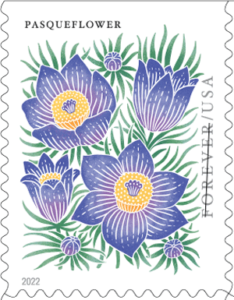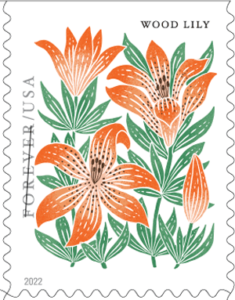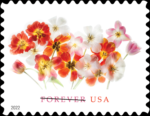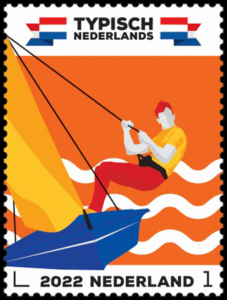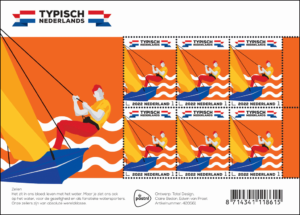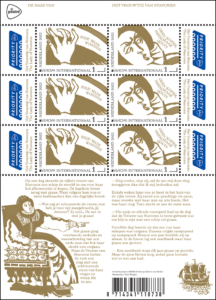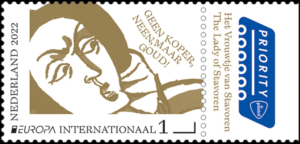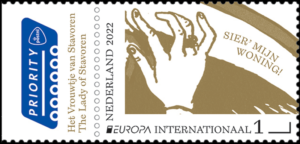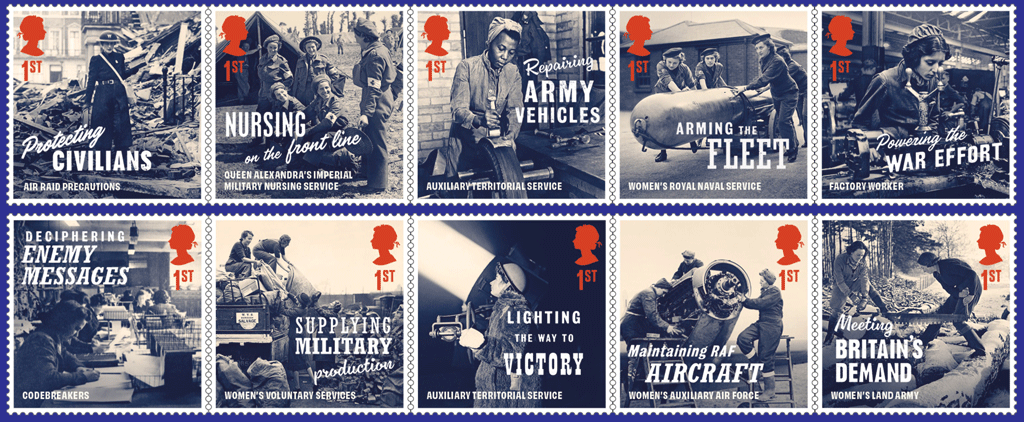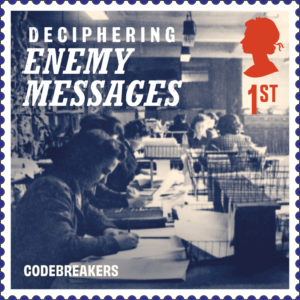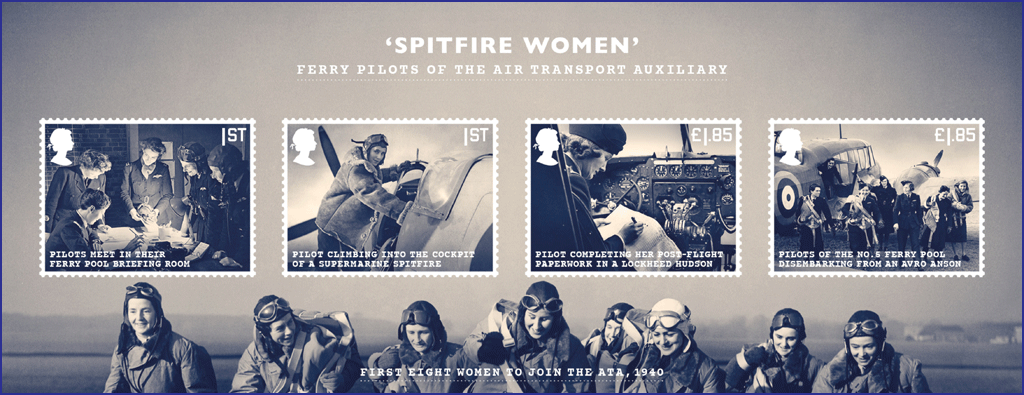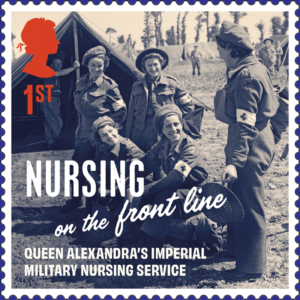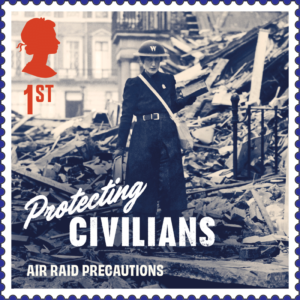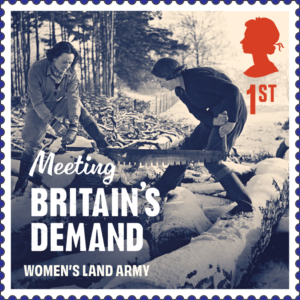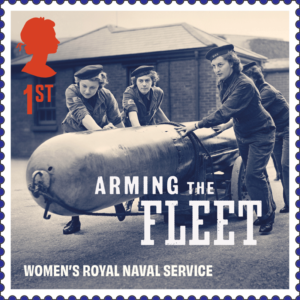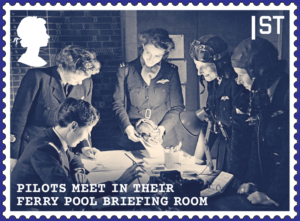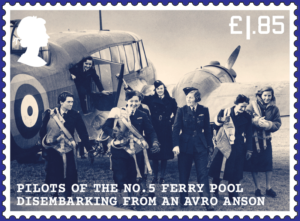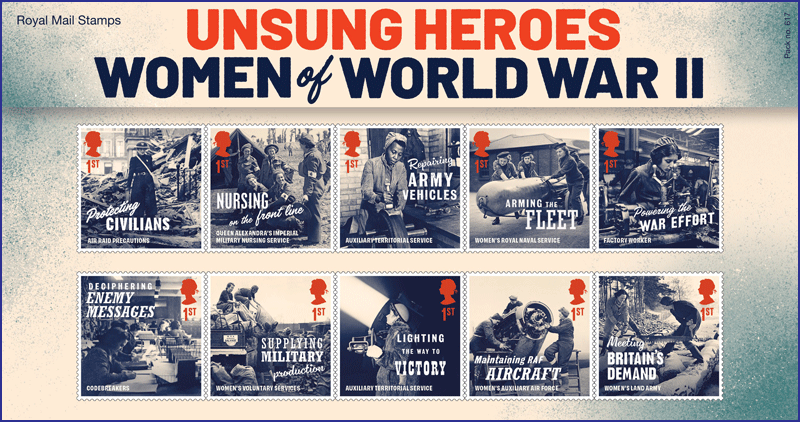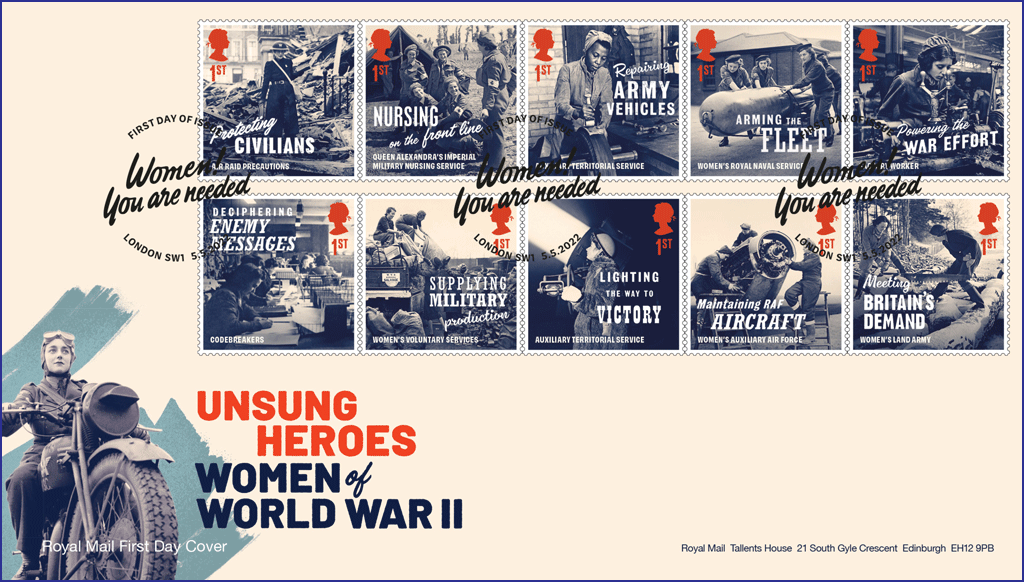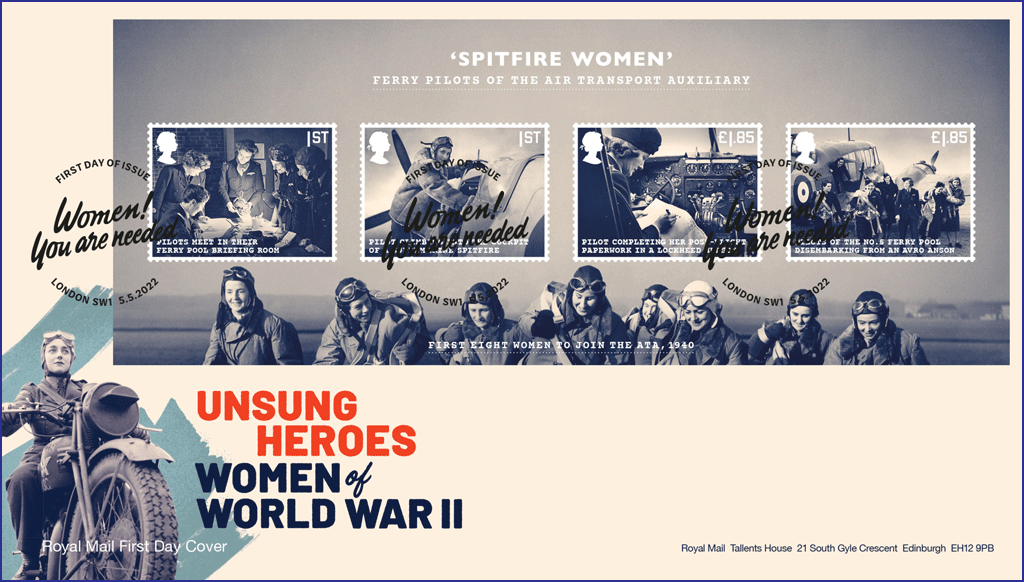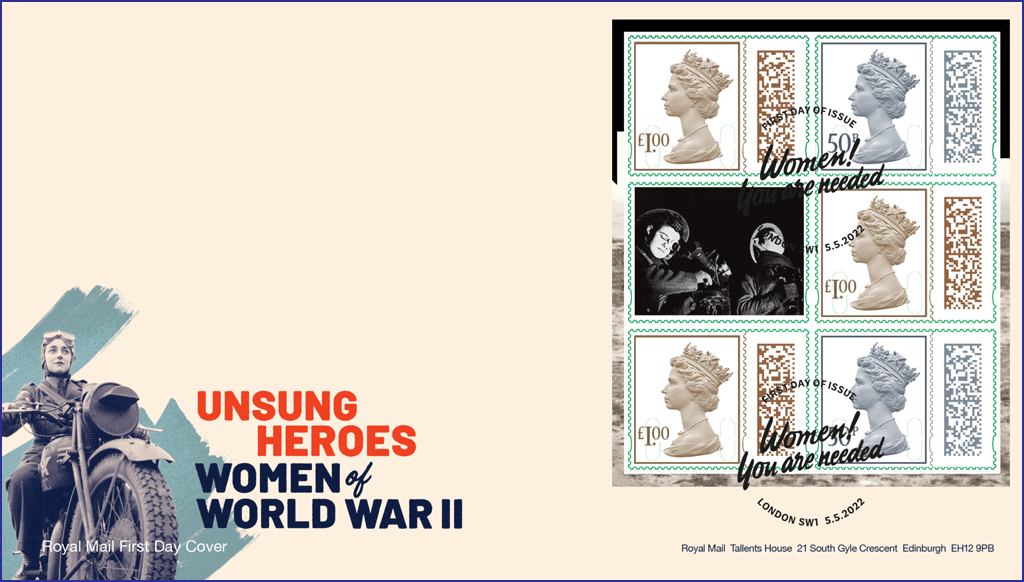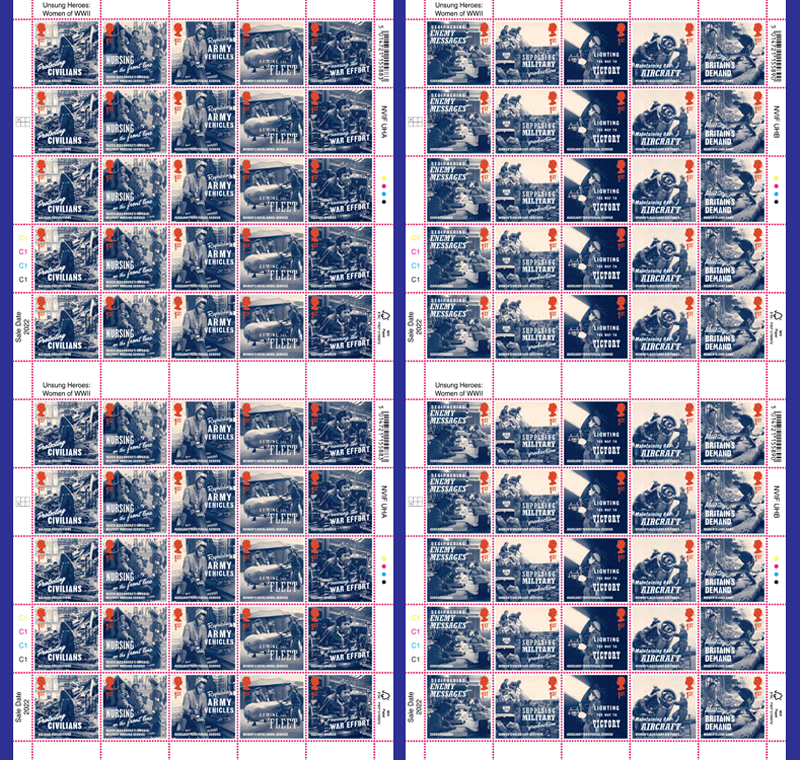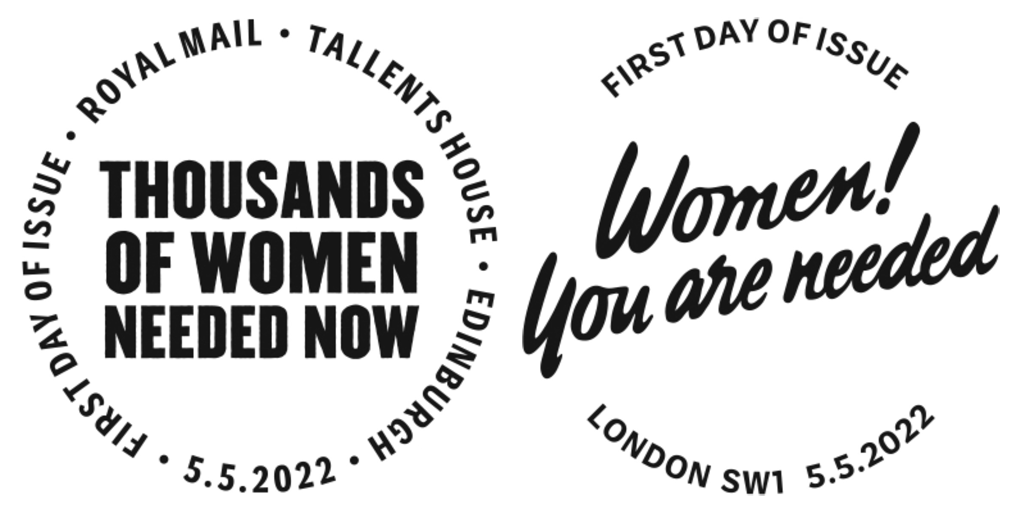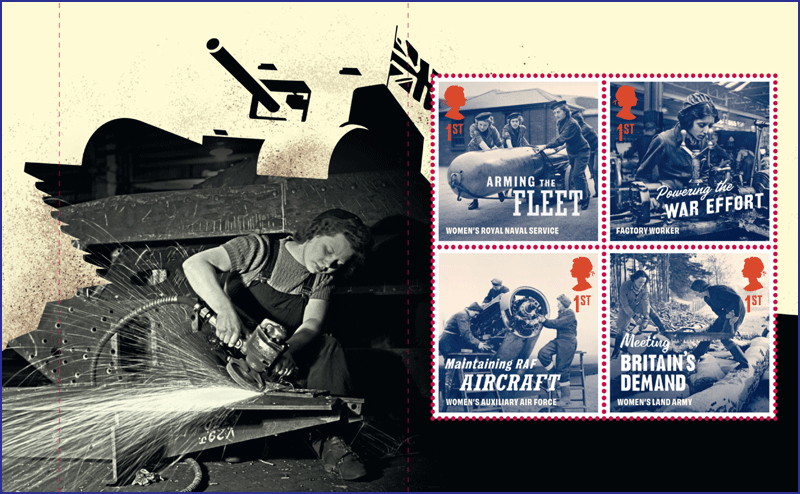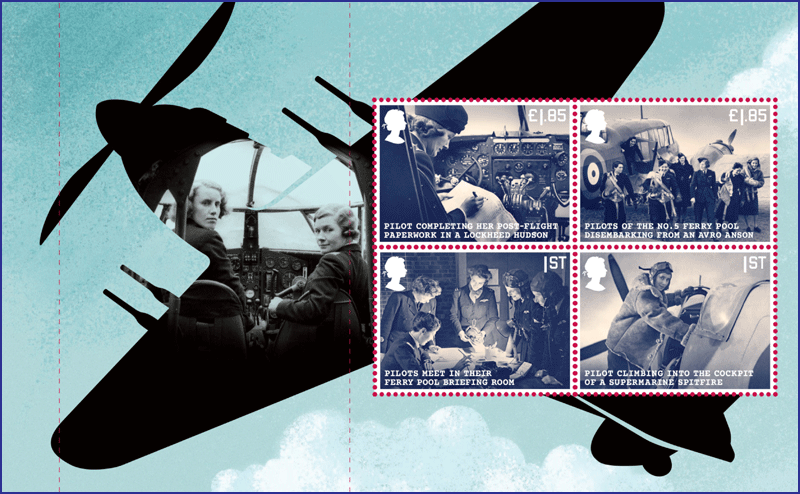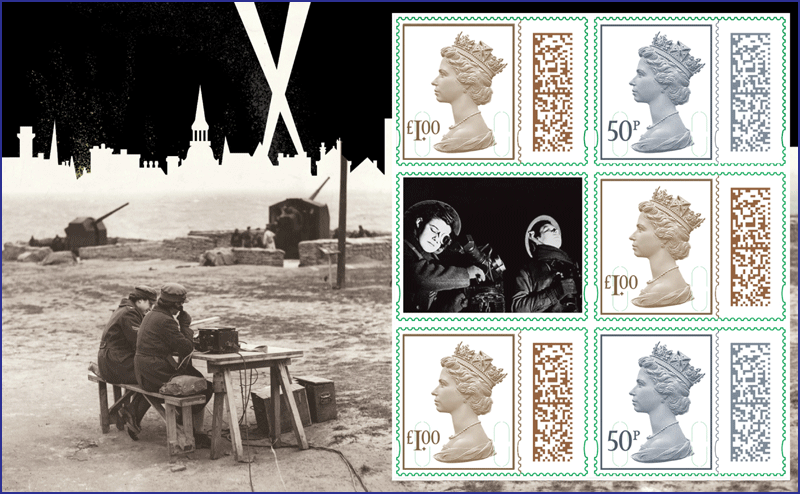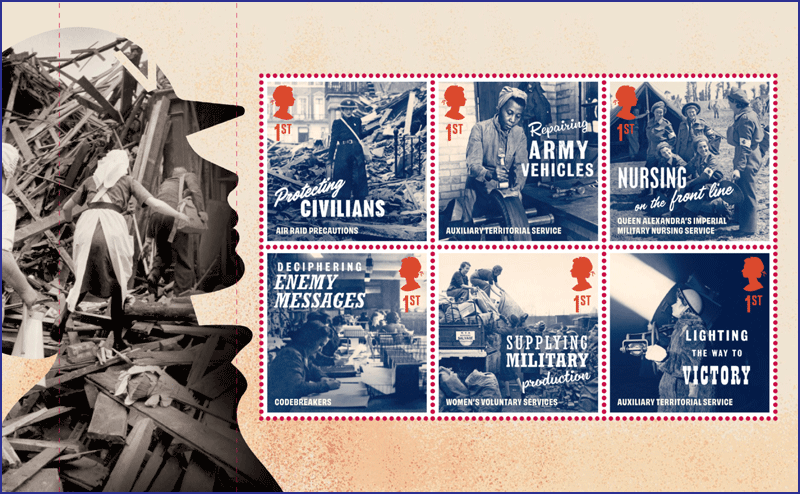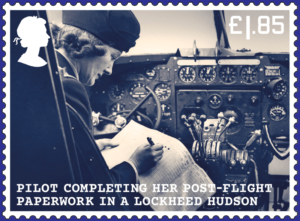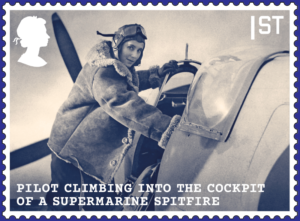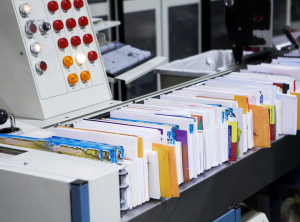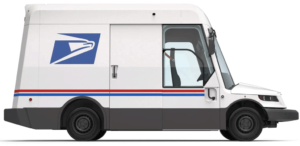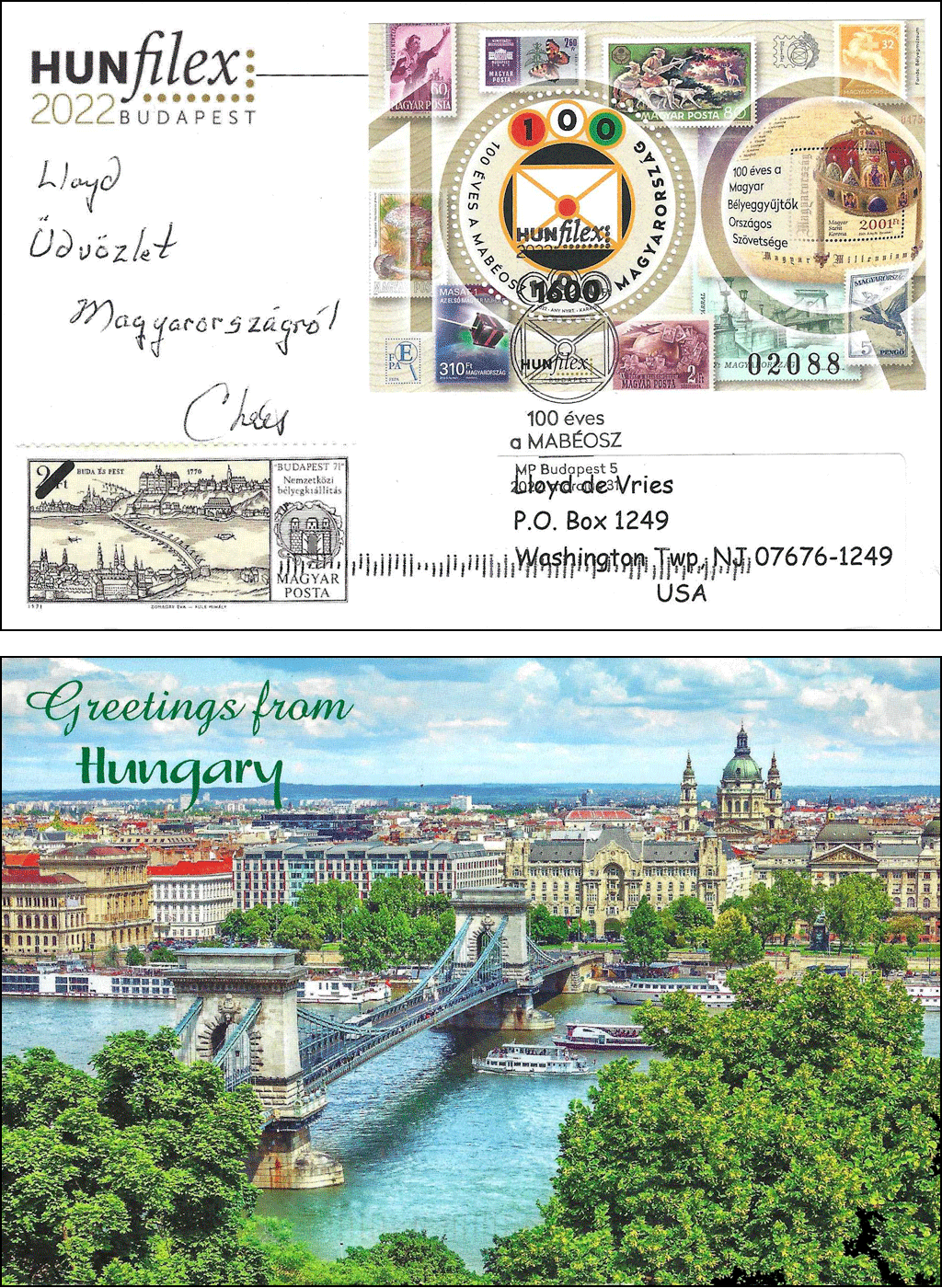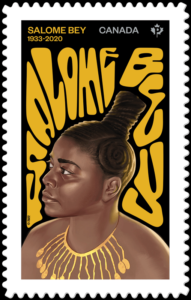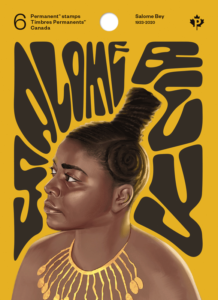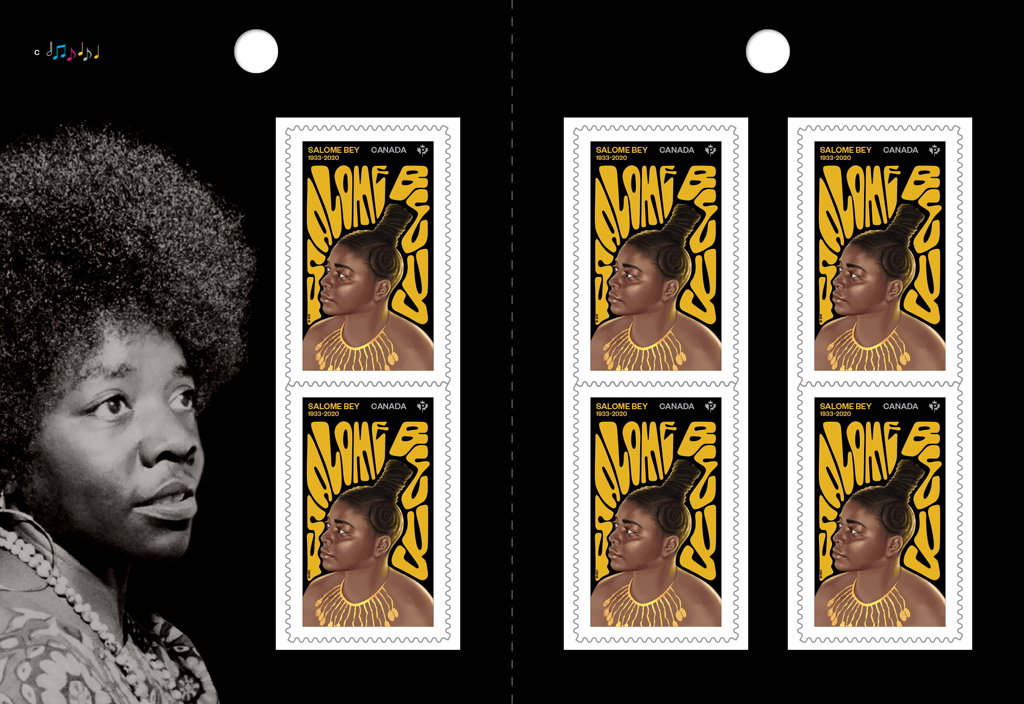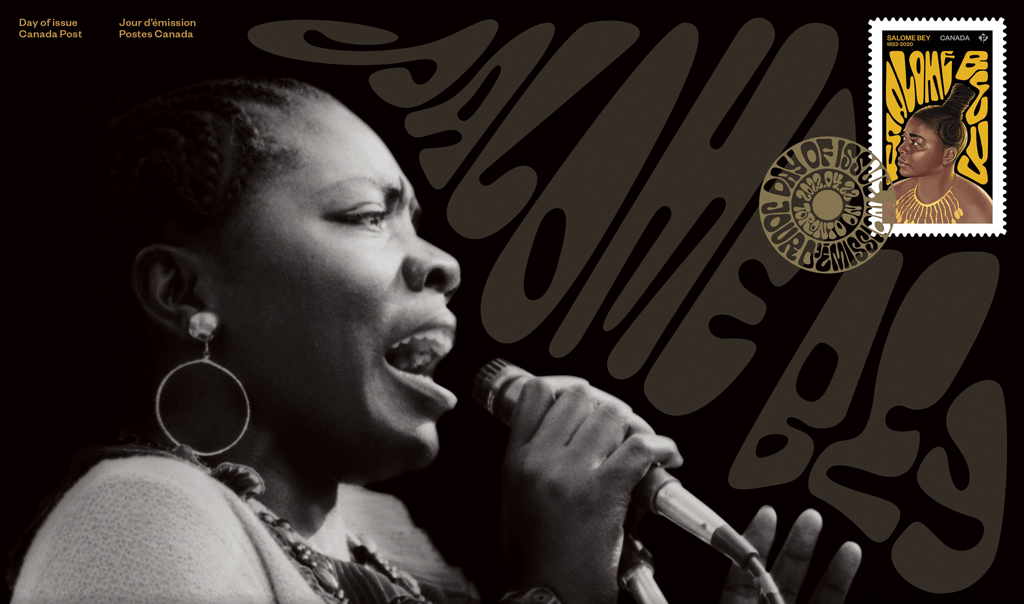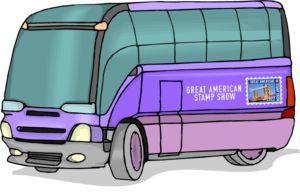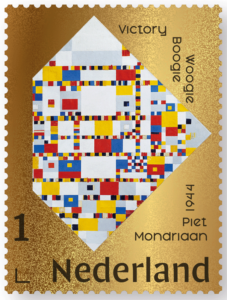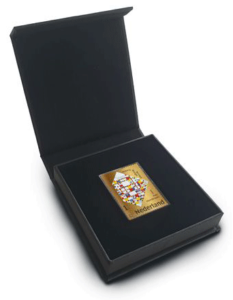[press release] [issue titles link to the page for that issue]
U.S. Postal Service Reveals More Stamps for 2022
Peanuts, Holidays and Space Exploration Featured
WASHINGTON — The U.S. Postal Service has announced several additions to the 2022 stamp program first announced last fall. All stamp designs are preliminary and subject to change. Additional details, including issue dates and locations, will be announced later.
Charles M. Schulz [Click for more information on this issue]
 New stamps salute the centennial of cartoonist Charles M. Schulz (1922–2000) whose “Peanuts” characters are some of the best known and most beloved in all of American culture. For five decades, Schulz alone wrote and drew nearly 18,000 strips, the last one published the day after he died. Each character reflects Schulz’s rich imagination and great humanity. His resonant stories found humor in life’s painful realities including rejection, insecurity and unrequited love.
New stamps salute the centennial of cartoonist Charles M. Schulz (1922–2000) whose “Peanuts” characters are some of the best known and most beloved in all of American culture. For five decades, Schulz alone wrote and drew nearly 18,000 strips, the last one published the day after he died. Each character reflects Schulz’s rich imagination and great humanity. His resonant stories found humor in life’s painful realities including rejection, insecurity and unrequited love.
In a celebratory mode, characters from “Peanuts” adorn 10 designs on this pane of 20 stamps and form a frame around a 1987 photograph of Schulz.
Art director Greg Breeding designed the stamps from Schulz’s artwork and an existing photograph by Douglas Kirkland.
James Webb Space Telescope [Click for more information on this issue]
Celebrate NASA’s remarkable James Webb Space Telescope, the largest and most 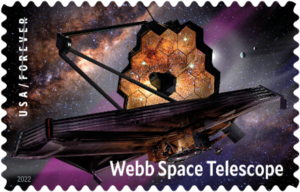 complex telescope ever deployed in space—capable of peering directly into the early cosmos and studying every phase of cosmic history. Launched on Dec. 25, 2021, Webb now orbits the Sun about a million miles away from Earth.
complex telescope ever deployed in space—capable of peering directly into the early cosmos and studying every phase of cosmic history. Launched on Dec. 25, 2021, Webb now orbits the Sun about a million miles away from Earth.
The image on the stamp is an artist’s digitally created depiction of the telescope against a dazzling starscape. The selvage photograph of a star and distant space was taken by Webb early in its mission, brilliantly confirming the perfect alignment of the telescope’s 18 mirror segments.
Art director Derry Noyes designed the stamp using existing art by James Vaughan and an image provided by NASA/Space Telescope Science Institute.
Snowy Beauty [Click for more information on this issue]
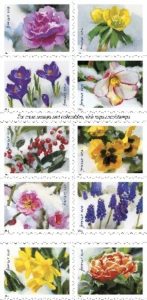 These stamps celebrate the warmth and cheer that flowers and berries bring to our natural landscapes, even after a surprise snow.
These stamps celebrate the warmth and cheer that flowers and berries bring to our natural landscapes, even after a surprise snow.
In these hand-sketched and painted designs, the artist uses light, shadow and luminous color to evoke the beauty of 10 species: camellia, winter aconite, crocus, hellebore, winterberry, pansy, plum blossom, grape hyacinth, daffodil and ranunculus.
Derry Noyes designed the stamps with original oil paintings by Gregory Manchess.
The Snowy Beauty stamps will be released in Guilford, IN, without a first-day-of-issue ceremony this fall.
Hanukkah [Click for more information on this issue]
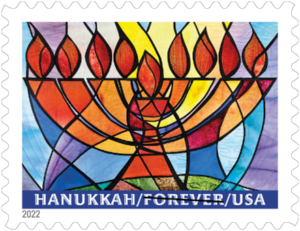 The Postal Service continues its tradition of celebrating the joyous Jewish holiday of Hanukkah with a stamp design that features an original wall-hanging.
The Postal Service continues its tradition of celebrating the joyous Jewish holiday of Hanukkah with a stamp design that features an original wall-hanging.
The fiber art was hand-dyed, appliquéd and quilted to form a colorful abstract image of a hanukiah, the nine-branch candelabra used only at Hanukkah.
Jeanette Kuvin Oren was the stamp designer and artist. Ethel Kessl was the art director.
Virgin and Child [Click for more information on this issue]
This Christmas stamp features Virgin and Child, an oil-on-panel painting from the first half 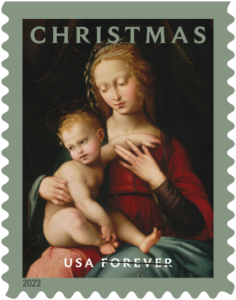 of the 16th century by a Florentine artist known as the Master of the Scandicci Lamentation.
of the 16th century by a Florentine artist known as the Master of the Scandicci Lamentation.
Depicting the tenderness of a mother and child, interpretations of the Virgin Mary with the Christ Child take innumerable forms in the Christian art of the Italian Renaissance. Imbued with a sense of dignity and grace, this stamp offers a traditional touch for cards and letters in a season of celebration, reflection and family. This painting is in the collection of the Museum of Fine Arts, Boston.
Art director Greg Breeding designed the stamp.
Kwanzaa [Click for more information on this issue]
This year the Postal Service issues its ninth stamp in celebration of Kwanzaa, a holiday  with origins in ancient and modern first-harvest festivities from across the African continent. Kwanzaa incorporates and reimagines many communal traditions as a contemporary celebration and reaffirmation of African American culture.
with origins in ancient and modern first-harvest festivities from across the African continent. Kwanzaa incorporates and reimagines many communal traditions as a contemporary celebration and reaffirmation of African American culture.
The stamp design depicts a girl and a boy dressed in robes akin to spiritual garments, with a kinara (candleholder) and seven lit candles (mishumaa saba) in front of them. The kinara is the focal point around which friends and family gather and place meaningful objects.
Art director Antonio Alcalá designed the stamp with original artwork by Erin Robinson.
Holiday Elves [Click for more information on this issue]
The Postal Service evokes the holiday spirit with four new se-tenant stamps featuring a 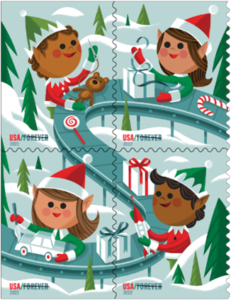 colorful digital illustration of elves preparing toys on a winding conveyor belt in a snow-laden forest.
colorful digital illustration of elves preparing toys on a winding conveyor belt in a snow-laden forest.
Like many beloved Christmas traditions—including Santa Claus himself—elves did not become a well-established part of the holidays in America until the 19th century. In the 20th century, as elves became firmly rooted in American Christmas lore, they eventually took center stage in beloved holiday television specials, films and books.
Don Clark was the artist and stamp designer. Antonio Alcalá was the art
director.

